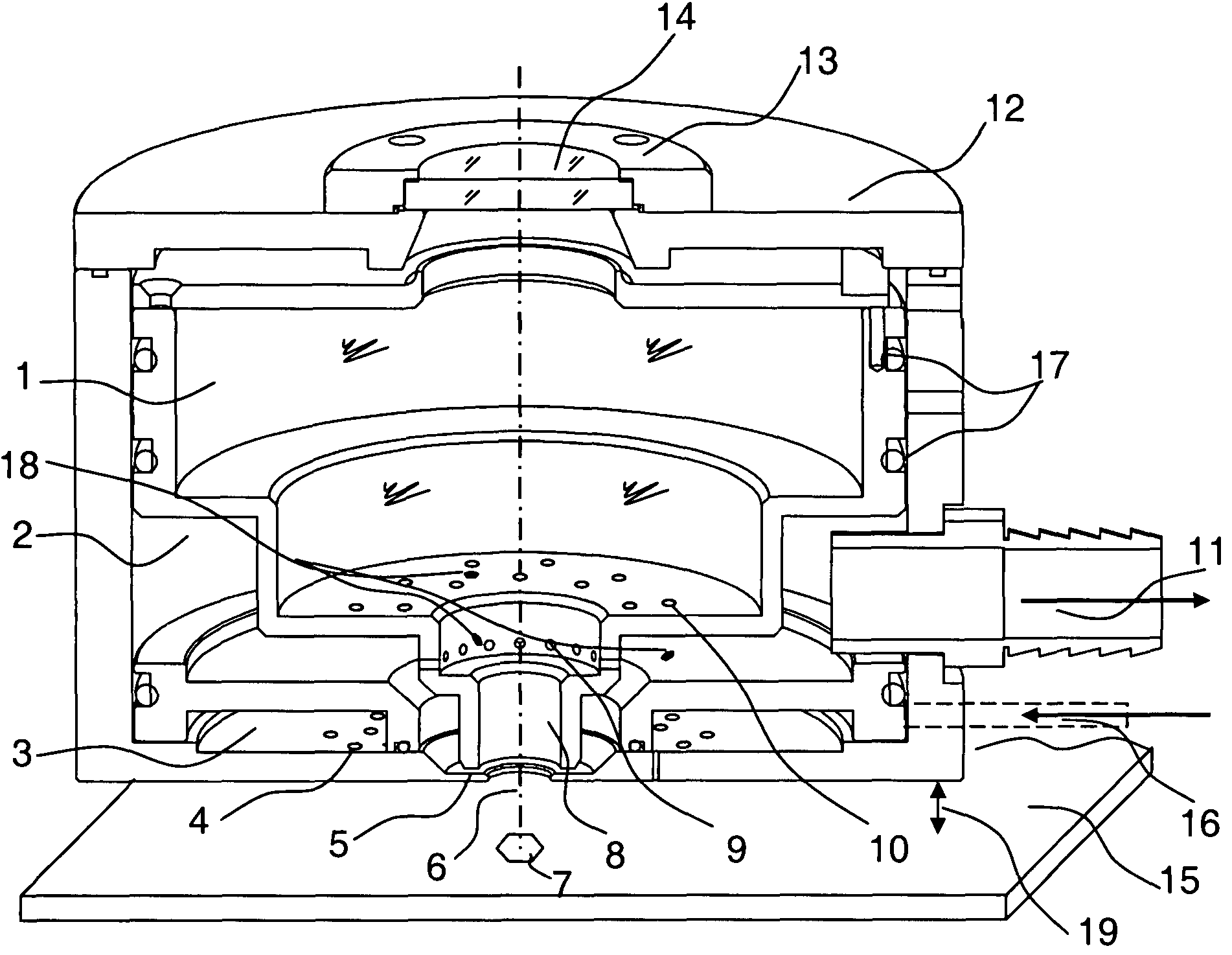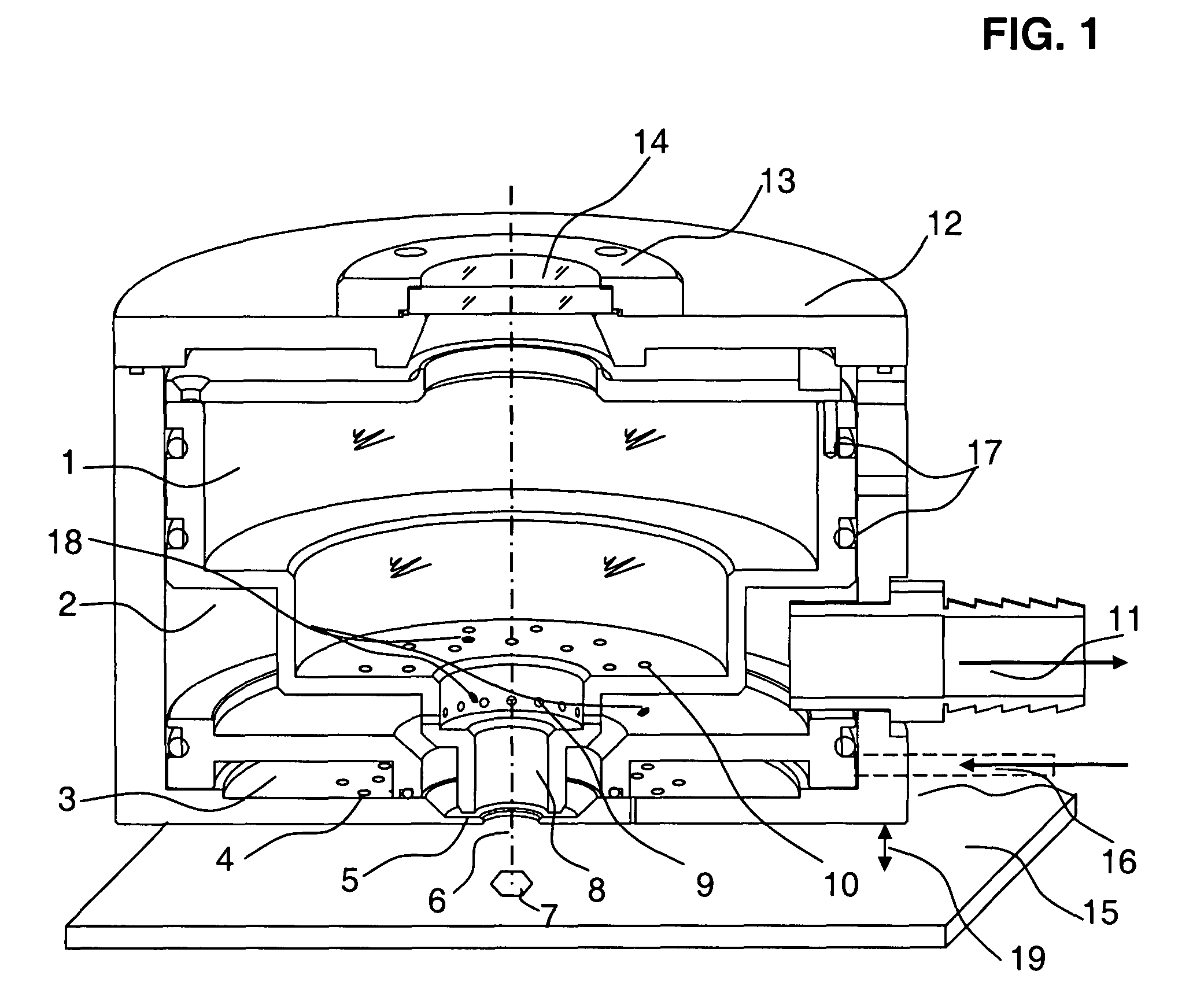Vacuum debris removal system
a vacuum and debris technology, applied in the direction of manufacturing tools, metal working equipment, welding/soldering/cutting articles, etc., to achieve the effect of efficient material removal, rapid debris removal, and optimal speed
- Summary
- Abstract
- Description
- Claims
- Application Information
AI Technical Summary
Benefits of technology
Problems solved by technology
Method used
Image
Examples
casea
[0065]C(fromSbst→R1→R2)=1 / [1CS→R1+1CR1→R2]=1 / [126.55+119]=1 / [119]Casea:C(fromSbst→R1→R2)=11.07ℓsCaseb:C(fromSbst→R1→R2)=13.91ℓsC(fromSbst→R2)=11.86ℓs
Case a: CVP=22.93 l / s and case b: CVP=25 l / s
In fact, reducing the requirement for higher flow rate from the vacuum pump and in turn providing a range of velocities for effective debris removal.
DRS Gap
[0066]DRS gap and control of velocity, in turn controlling force required in picking up of debris is equally important in comparison with maintaining of desired conductance.
Throughput Q=C*□P
=C*F / A since, difference in pressure=Force per unit area
F=(Q*A) / C
=throughput*area / conductance
PUM
| Property | Measurement | Unit |
|---|---|---|
| viscosity | aaaaa | aaaaa |
| viscosity | aaaaa | aaaaa |
| pressure | aaaaa | aaaaa |
Abstract
Description
Claims
Application Information
 Login to View More
Login to View More - R&D
- Intellectual Property
- Life Sciences
- Materials
- Tech Scout
- Unparalleled Data Quality
- Higher Quality Content
- 60% Fewer Hallucinations
Browse by: Latest US Patents, China's latest patents, Technical Efficacy Thesaurus, Application Domain, Technology Topic, Popular Technical Reports.
© 2025 PatSnap. All rights reserved.Legal|Privacy policy|Modern Slavery Act Transparency Statement|Sitemap|About US| Contact US: help@patsnap.com



